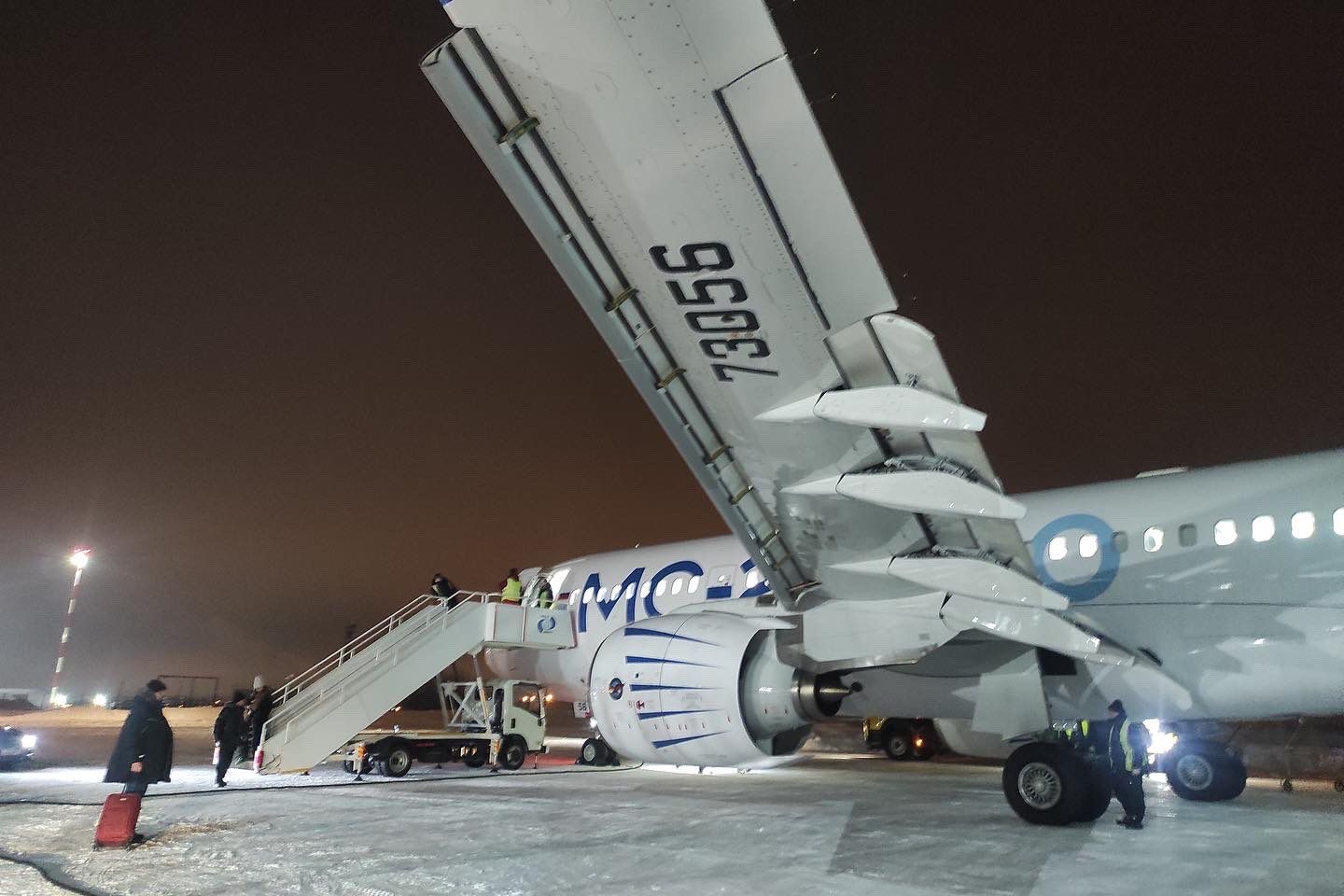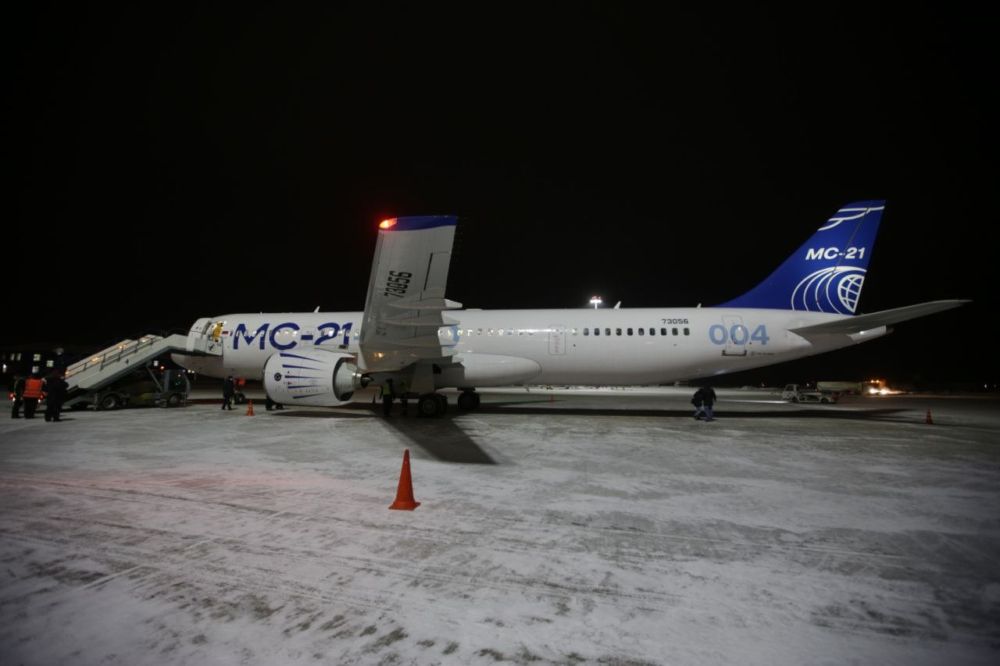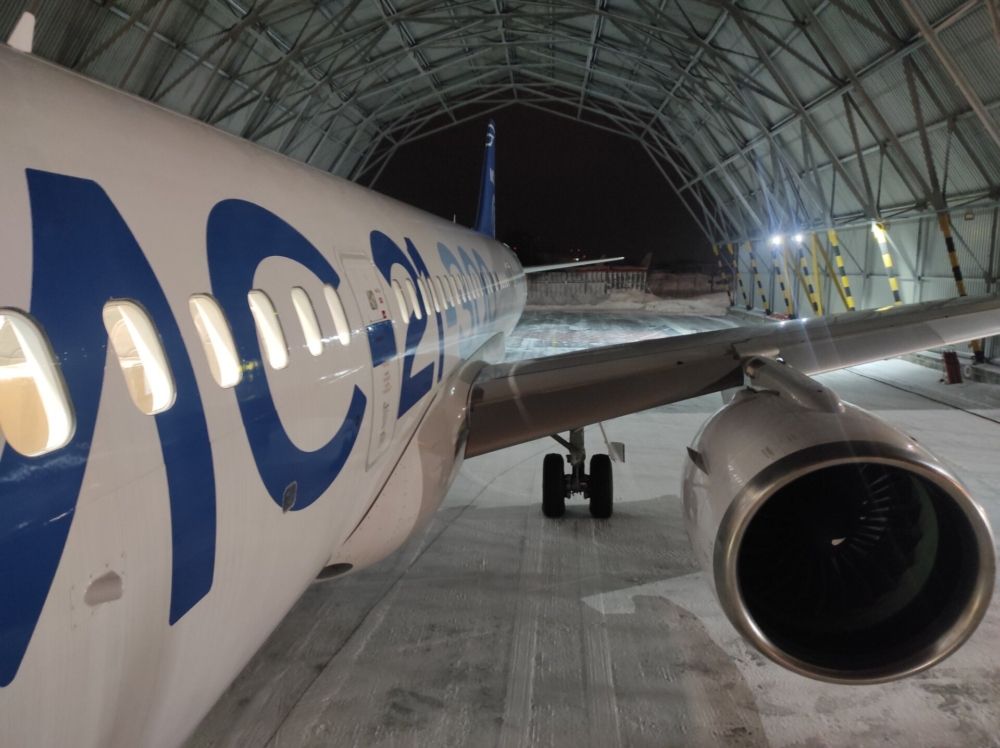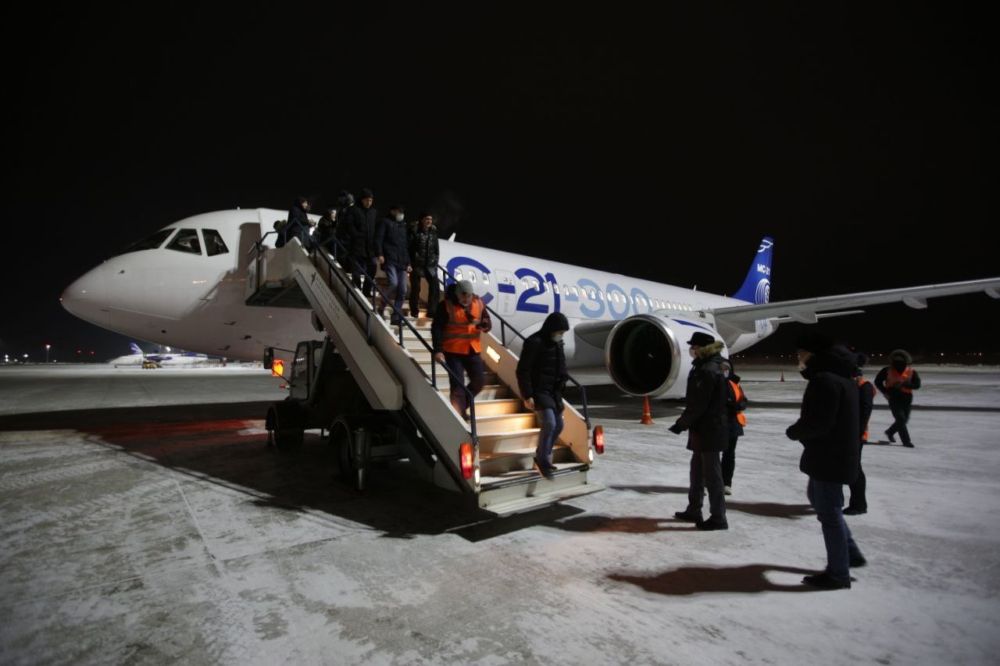Russia’s new narrowbody challenger, the MC-21, has arrived in Siberia to undertake extreme cold weather testing. The aircraft flew from Moscow to Yakutsk at the weekend, and is now undertaking a series of operations to confirm its capabilities in temperatures as low as minus 30 degrees C (-22 degrees F). This will add an extension to its certification for operations in some of the world’s toughest climates.
MC-21 heads to Sakha
The up-and-coming narrowbody from Russia, the MC-21, is undergoing some thorough testing in the extreme conditions of Siberia. According to reporting from ATO.ru, the firm has taken the new jet to the Sakha republic, and has conducted extreme cold weather tests with more than 70 passengers onboard.
Rostec notes that these tests are not just for extreme weather, but also served as a proving flight from Moscow Zhukovsky. Nevertheless, with temperatures dipping down to minus 30 degrees C (-22 degrees F), the narrowbody aircraft is certainly proving its capabilities to operate safely in such cold environments.
Accompanying the MC-21-300 were a team of almost 60 engineers from Irkut and from Pratt & Whitney. Over the coming days, the team will be testing the aircraft’s performance in a variety of conditions, including frosts, fog and more. In laboratory testing, the components of the MC-21 have been tested in temperatures as low as minus 30 degrees C (-22 degrees F), but this will be the first time the complete aircraft has been tested in such extreme temperatures.
Daniil Brenerman, Managing Director of the A. S. Yakovlev Design Bureau, told the publication,
"Ground and flight tests in Yakutia will take place, approximately, for three weeks, depending on the air temperature in the region. Each stage of the tests is preceded by a cooling of the aircraft - in the evening and at night it will be in an open parking lot for 12 hours. Organizational and technical Yakutsk Airport and Yakutia Airlines provide support for testing.”
Three weeks of testing
The MC-21 arrived in Yakutsk on Sunday, January 23rd. The aircraft used for the testing is ‘004’ – the fourth MC-21 to be produced and carrying tail number 73056. It’s a P&W-powered aircraft with a non-Russian-made composite wing. The trip from Moscow to Yakutsk covers more than 3,000 miles, and would have taken the narrowbody almost six hours to fly.
The remoteness of the destination was all part of the testing process. With around 70 people onboard, the aircraft’s systems were put through their paces to see how comfortably it could accommodate such a long flight. Now in Yakutsk, the aircraft faces its next challenges, and will likely be there until at least mid-February. Brenerman further noted,
“Ground and flight tests in Yakutia will take place approximately within three weeks, depending on the air temperature in the region. Cooling down of the aircraft precedes each stage of the tests - in the evening and at night it will be in an open parking lot for 12 hours. Organizational and technical support for testing is provided to us by Yakutsk Airport and Yakutia Airlines.”
The MC-21 received its initial type certification at the end of 2021. The extreme cold weather testing is required as an extension of this certificate, to ensure the aircraft can be operated by airlines working in very cold environments. With the vast majority of the orders coming from Russian airlines so far, this is a critical element of the MC-21s future.




